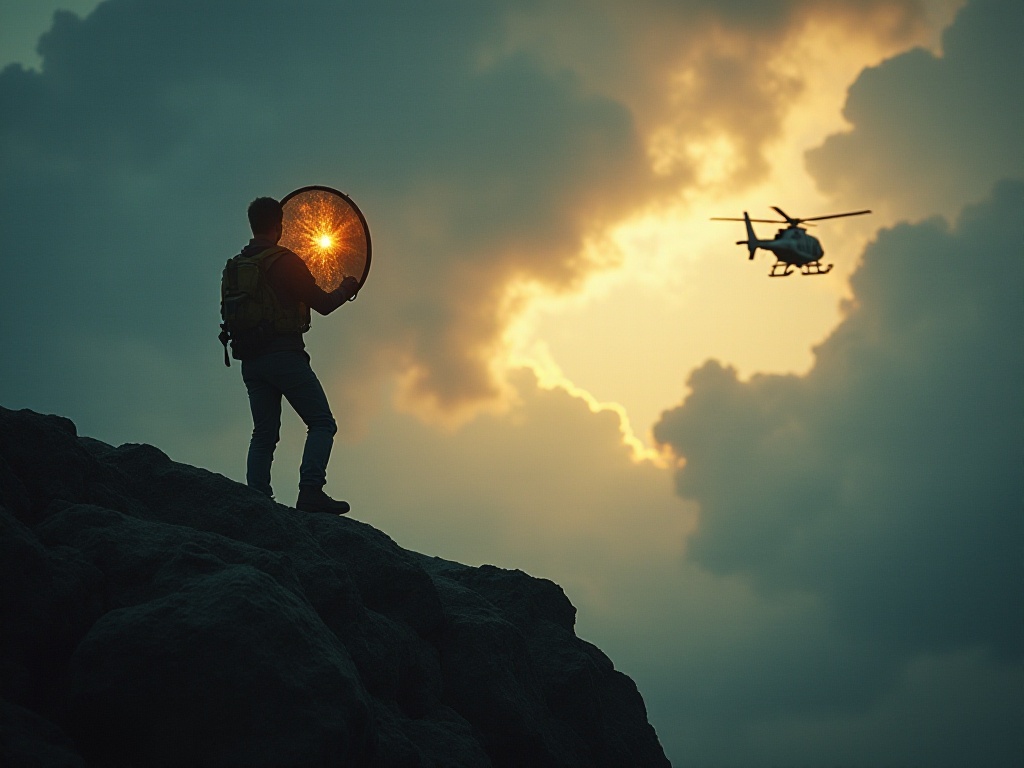Opening Confession
It happened last fall. As a content creator who often leads fans on wilderness adventures, I thought I had extensive outdoor experience. That day, I went hiking alone with my gear, planning to follow a moderately difficult trail. I packed enough food and water, wore professional hiking boots, and carried a backpack full of essentials. The weather forecast predicted clear skies, and I thought it would be a perfect hiking trip. Little did I know that a seemingly ordinary turn would leave me lost in the deep mountains for three entire days. This experience taught me just how crucial it is to master proper wilderness survival skills.
Mindset is Key
Did you know? In wilderness emergencies, the deadliest threat isn't wildlife or hunger - it's panic. I clearly remember the moment I realized I was lost; my heart was pounding so hard it felt like it would burst. I was surrounded by unfamiliar terrain, with no GPS signal and no cell service. Fear came rushing in like a tide, my hands started shaking, and my breathing became rapid. But I told myself: panicking won't help; it only makes things worse.
I forced myself to stop, finding a relatively clean rock to sit on. Deep breaths, staying calm. I recalled what I learned at outdoor training camp: people make the worst decisions in emergencies, and these decisions can make the situation even worse. I started following the method learned in training, systematically analyzing my current situation. I still had water, some dry food, basic equipment, and the weather was fairly clear. Though the situation was bad, it wasn't hopeless.
After this incident, I developed a "golden rule" for handling wilderness emergencies: take three deep breaths, then prioritize tasks in order of "water, shelter, fire, food." This order isn't arbitrary. According to Red Cross statistics, humans can only survive 3 days without water but can last 3 weeks without food. This data tells us that finding water sources takes priority over finding food in wilderness survival.
I remember during outdoor training, the instructor shared a real case. An experienced mountaineer got lost in a mountain area and, overly worried about food shortage, abandoned a safe campsite to look for berries, resulting in injury during the search and making the situation much worse. If he had stayed calm and acted according to the correct priorities, the outcome might have been completely different.
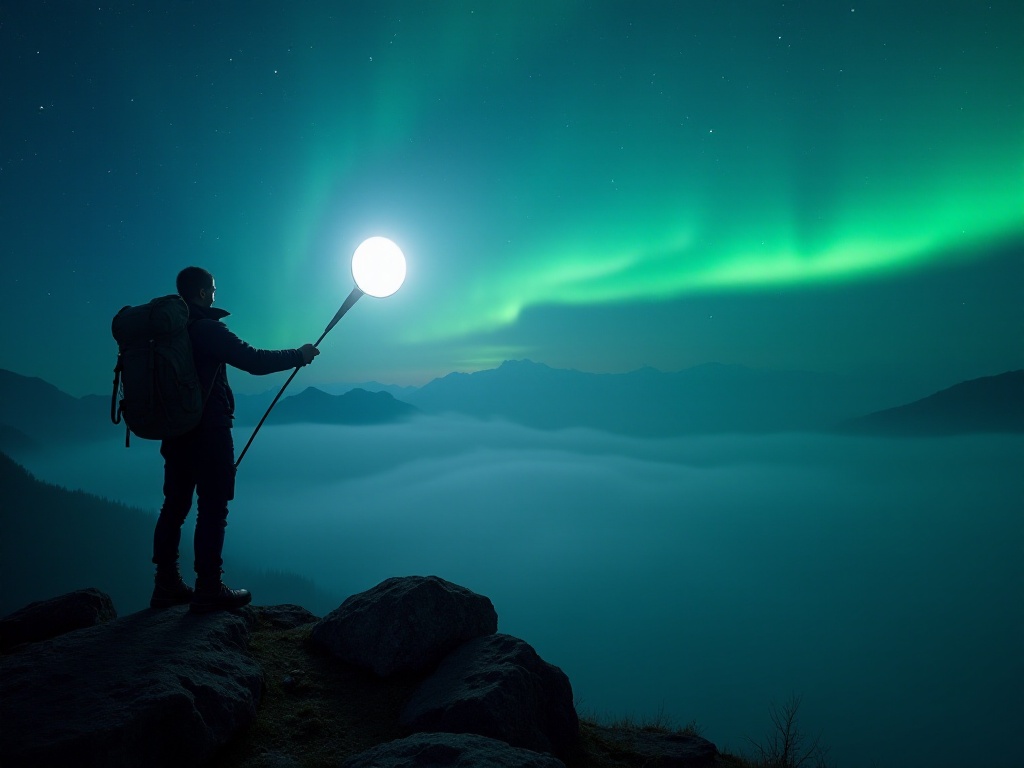
Obtaining Basic Resources
Finding Water is Crucial
In the wild, water sources are lifelines. I eventually found my way down the mountain by following streams. On the first day, I realized my two bottles of water wouldn't last long and needed to find a water source quickly. Here's a tip for finding water: follow valleys downhill, as water always flows downward. Areas with lots of bird calls likely have water sources nearby, as wildlife also needs water.
During my search for water, I found a small stream. Though the flow was minimal, the water looked relatively clear. I remembered from outdoor training that even clean-looking water might contain harmful bacteria. I had a portable water filter with me, which saved my life then. Without filtration equipment, you can also boil water before drinking.
If you can't find streams, you can collect dew from leaves or use plastic bags over tree branches to collect water vapor. I used this method on the second morning. I put a garbage bag from my backpack over a leafy branch, and soon collected some water. Though not much, in critical moments, this small amount of water can be lifesaving.
I also discovered an unexpected water source: bamboo. Water stored in bamboo segments can be drunk directly. This reminded me of reading in an outdoor survival manual that survival experts say bamboo water is not only safe but rich in minerals.
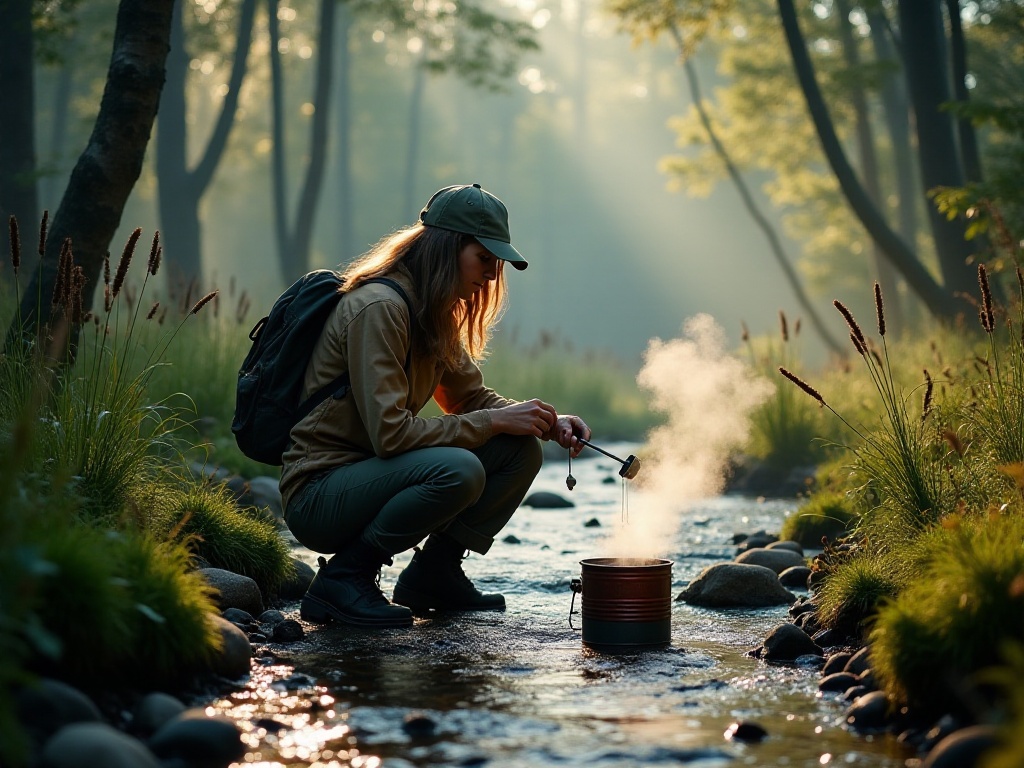
Building Shelter
Remember, a shelter doesn't need to be a luxury villa - it just needs to be functional. Using my emergency survival blanket and some branches, I built a temporary shelter that could block wind and rain. This reminded me of a statistic: in 5-degree weather, without shelter, the probability of hypothermia increases by 80%.
While building the shelter, I paid attention to several key points. First was terrain selection - finding a relatively flat, wind-protected area, preferably on slightly upward-sloping ground to prevent water accumulation during rain. I chose a spot next to a large tree, using the trunk as natural support. Ground debris and fallen leaves needed to be cleared away, as these not only make sleeping uncomfortable but might harbor snakes and insects.
I used rope from my backpack to create a line between two trees, forming the shelter's ridge. Then I draped the survival blanket over the rope, securing the sides with rocks. This created a simple A-frame tent. To increase warmth, I covered the shelter with an additional layer of branches and leaves. Though basic, it effectively provided warmth and rain protection.
In the wild, a good shelter should serve three basic functions: blocking wind, preventing rain, and maintaining warmth. My temporary dwelling, though not comfortable, met these basic requirements. On the first night, when temperatures dropped to around ten degrees, this shelter prevented me from getting cold.
Fire-Making Tips
You probably wouldn't guess that I eventually started a fire using my glasses as a magnifying glass with sunlight. This reminded me of a statistic learned in outdoor training: survival rates in the wilderness are 65% higher with fire than without. Fire not only provides warmth but can also boil water, cook food, and signal for help.
Starting a fire isn't simple. First, collect tinder - I used my pocket knife to scrape off some dry bark, which makes excellent tinder. Then gather firewood of varying sizes, from pencil-thick to wrist-thick pieces. Arrange them like a pyramid, building from small to large. Patience is crucial - once the tinder catches, carefully nurture the flame while gradually adding firewood.
I cleared an area around the fire site and surrounded it with stones to prevent spreading. My first attempt failed because the tinder was slightly damp. Then I remembered a trick: shredding toilet paper into fine strips makes it easier to light. Sure enough, the second attempt succeeded.
The fire provided not just warmth but hope. Mountain nights are especially cold, and with the fire, I could dry my wet clothes and boil water for sterilization. Most importantly, the firelight provided immense psychological comfort in the darkness.
Advanced Survival Techniques
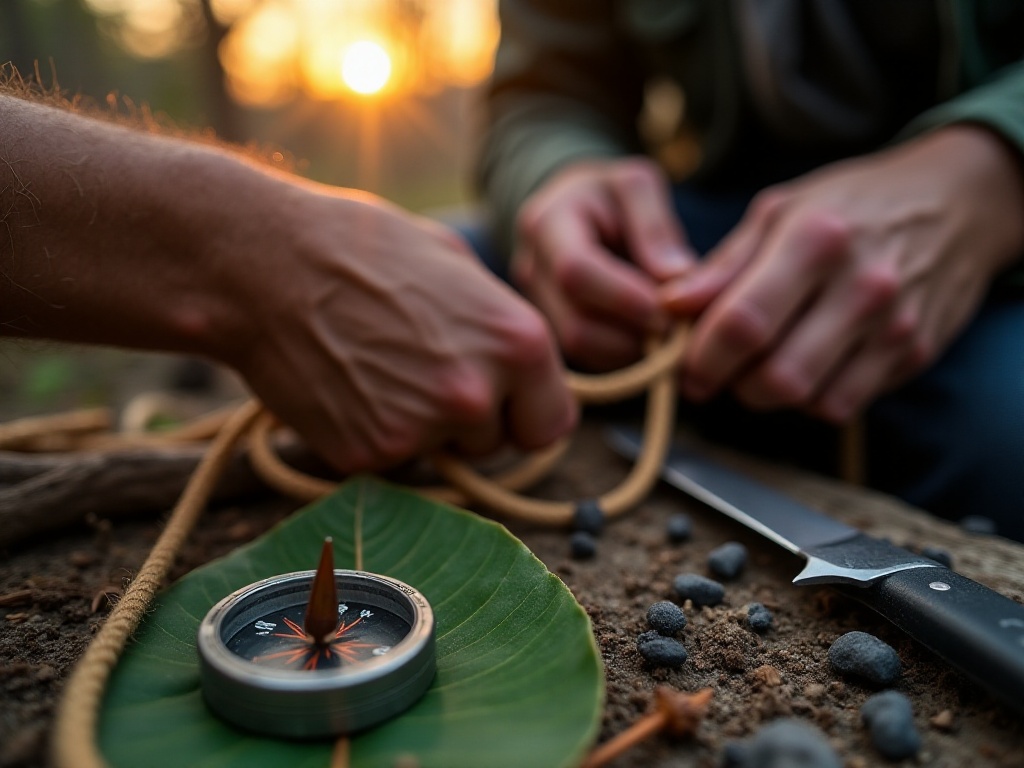
Creative Use of Equipment
Do you know what else duct tape can do besides repairing equipment? It can serve as a bandage, temporary shoe sole repair, and even stabilize fractures. I now always carry a roll because it's incredibly versatile.
During this experience, I discovered many everyday items had unexpected uses. Plastic bags, besides carrying things, can collect water and make emergency raincoats. Flashlights, beyond illumination, can signal for help at night. My trekking poles not only helped me walk but also tested ground stability to avoid dangerous areas.
The aluminum foil survival blanket might be the most magical equipment. It not only provides warmth but can collect rainwater, create solar reflectors, and even serve as a signal mirror. This experience taught me that in the wild, equipment use is only limited by our imagination.
I also learned a technique: how to make a simple filter using a plastic bottle. Turn the bottle upside down, cut off the bottom, then layer activated charcoal, fine sand, coarse sand, and pebbles to create a basic water filtration system. While it can't completely purify water, it can filter out most debris.
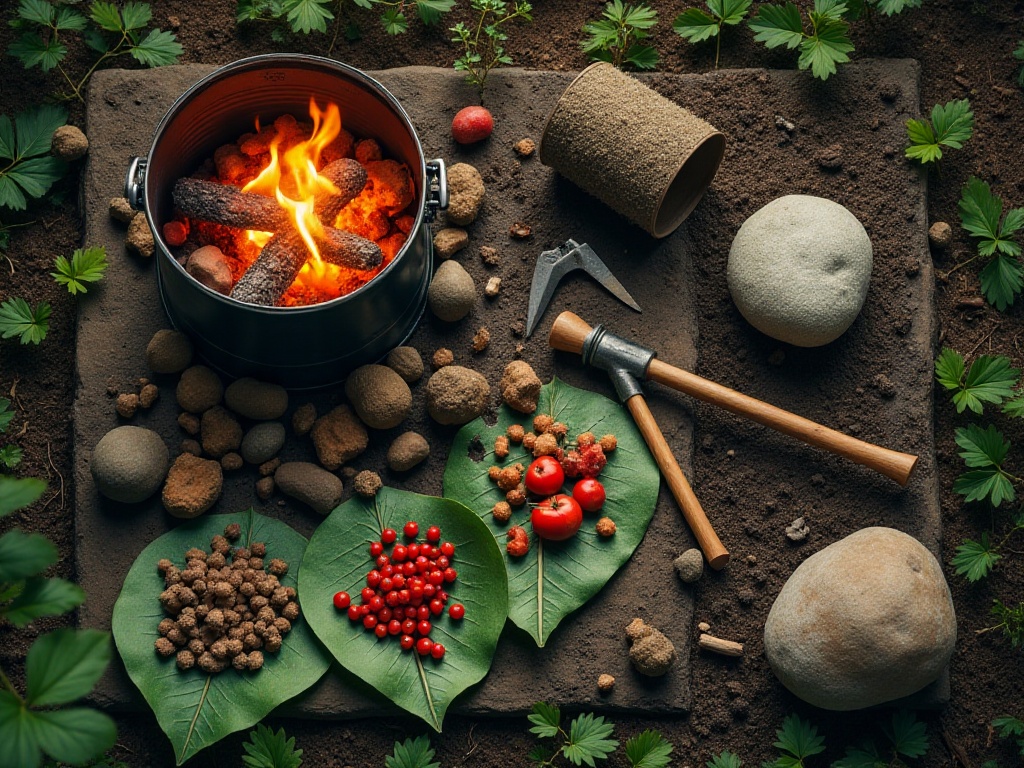
Direction Finding
What if you don't have a compass? I determined direction using my watch and the sun's position. The method: point the hour hand at the sun, then bisect the angle between the hour hand and 12 o'clock - this bisecting line points south. This technique is over 85% accurate in the Northern Hemisphere.
Besides using a watch for direction, I learned to observe natural environment cues. For instance, tree rings are often denser on the south side than the north, and moss typically grows on the north side of trees. However, these methods aren't absolute - it's best to combine multiple indicators.
For nighttime direction finding, look for the North Star. Find the Big Dipper, draw a line through the outer two stars of the ladle, and extend it upward about 5 times the distance to find the North Star. This method is especially useful on clear nights.
While walking in mountainous areas, I noticed that ant nests are usually built on the south side of trees, where it's warmer. These small details can all help determine direction.
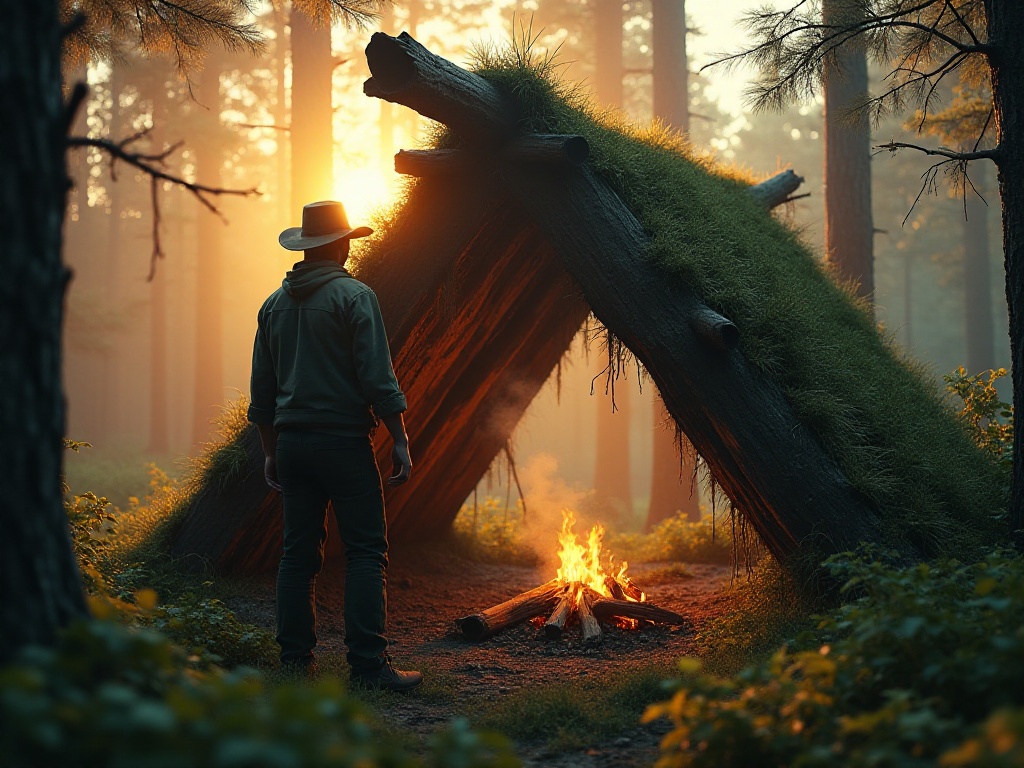
Distress Signals
The international distress signal is any form of three repetitions - like three whistle blasts, three bonfires, or SOS on the ground. Statistics show that people using standard distress signals are three times more likely to be found by rescue teams than those using random signals.
During this experience, I tried several different signaling methods. During the day, I used my survival blanket to reflect sunlight, flashing three times every few minutes. At night, I arranged three bonfires in a triangle formation - an internationally recognized distress signal that any rescue personnel would immediately understand.
I also arranged rocks on the ground to spell out a large SOS. This distress signal is particularly effective as it's visible from the air. The rescue team later told me this signal helped them finally locate my position.
Sound signals are also important. I carried a survival whistle and blew it three times at intervals. Sound travels far in valleys, and whistle blasts are more distinguishable than human voices.
Final Thoughts
This experience taught me that wilderness survival skills aren't just knowledge on paper - they're life-saving abilities. Don't you agree? If you frequently engage in outdoor activities, it's worth noting these techniques; they might come in handy someday.
During these three days, I experienced fear and despair, and learned the challenges of survival. But these experiences gave me a deeper understanding of survival. Every outdoor enthusiast should understand that nature is both beautiful and dangerous - we must approach it with respect and thorough preparation.
Looking back, the skills learned at training camp and seemingly trivial details all proved crucial in critical moments. Knowing to follow streams, how to determine direction, how to build shelter - these weren't just theoretical knowledge but literally saved my life.
One crucial point: always inform friends and family of your itinerary. This simple action could save your life in emergencies. According to outdoor rescue statistics, 80% of successful rescues were aided by victims having shared their planned routes beforehand. If I hadn't told my friend my general route, no one would have known where to start looking for me.
Now, before every trip, I prepare more carefully. Not just gathering equipment, but studying routes, understanding terrain, and checking weather forecasts. This preparation might seem tedious but is essential. After all, in the wilderness, any small detail could affect survival.
This experience also filled me with respect for rescue personnel. After receiving the alert, they immediately organized a search and rescue operation, finally finding me on the third day. Their professionalism and selfless dedication deeply moved me.
Do you have any wilderness survival experiences or tips to share? Feel free to tell me in the comments. Let's learn and grow together to become more professional outdoor enthusiasts.






